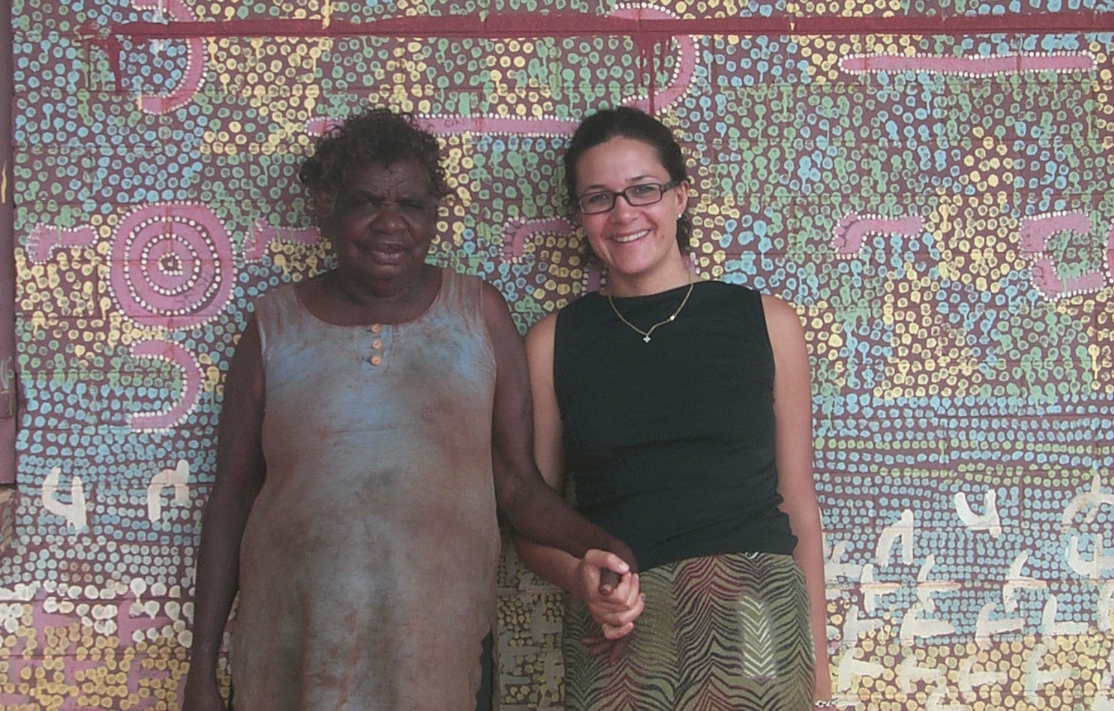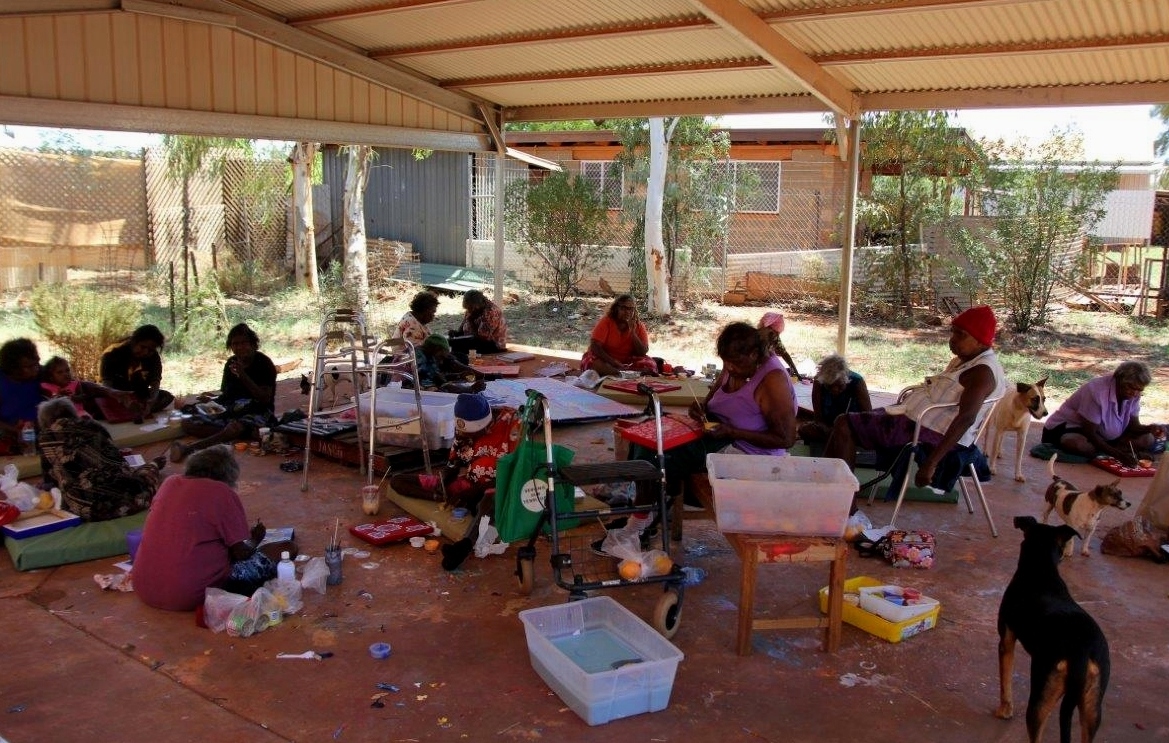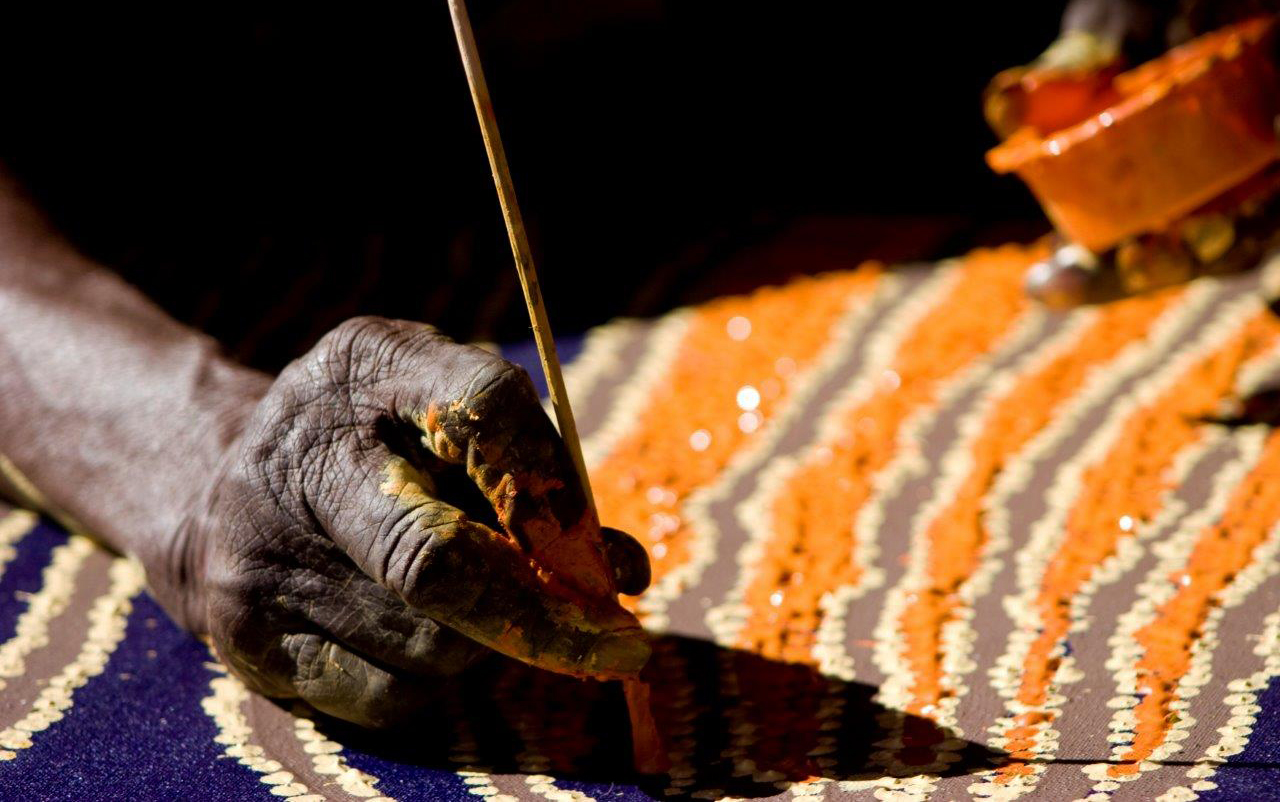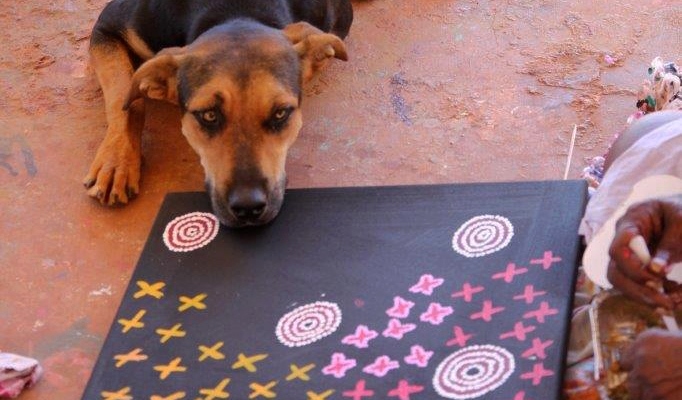Talking About A New Generation at Warlukurlangu Arts
Cecilia Alfonso is the Manager of Warlukurlangu Arts in the desert community of Yuendemu, 300 kilometres north-west of Alice Springs. The art centre is one of the longest-running and most successful Aboriginal-owned art centres in Central Australia. The centre exhibits work from Warlpiri artists. In this interview Cecilia talks about the new generations of artists coming through and the importance of Warlukurlangu Arts for the local community.

The exhibition at Japingka has a lot of new and younger artists showing. What can you tell us about the process of passing on roles from older to younger artists?
I started working here seventeen years ago. None of those original artists I was working with are still around. Over the time that I have been working here we've been very conscious that we were working with the generation of first contact people. We had this core group of old artists. In order for the Warlukurlangu Arts to be viable in the long term, we had to engage with the younger artists. It was a conscious thing we knew we needed to do.
How do you go about facilitating that?
The main thing that we do is create a very welcoming art centre, where the younger artists have always been welcome. They've always been allowed to paint. We have an unrestrictive policy, as long as people aren't supposed to be at school anybody can engage in the art centre activities. If you request a canvas you get given a canvas. People get very comfortable about starting to paint. We've tried to create a very welcoming environment.

The younger people are naturally coming in and out of the art centre over the years. They've naturally done that to visit the older people. We engaged with them. Even if people weren't necessarily visiting while their parents or grandparents were alive, once the grandparents pass away they paint more actively, because they need the income from it.
How do you think younger artists perceive the role of art in their community?
When I arrived seventeen years ago, people often would panic saying "Oh my god, what is going to happen to the Aboriginal art industry when these old people die?" People often said that. They would ask me "What do you think the future of Aboriginal art is?" At first, I didn't know. Now I've been here for an extended period, I've watched a natural transition where younger people pick up the art when there is a space for them to do so. They step up to assume responsibility when the opportunity is there.
I worked many years very closely with Paddy Japaljarri Sims and Bessie Nakamarra Sims. They would come and work hard every day. They were supporting a very large family group. It seemed to me at the time that the younger people were living off them. Once the older artists died the next generation picked up and naturally took over those roles. They began to work harder. I'm watching the third generation do the same thing. People really pay more attention when they need to. And so how do they see the role in the community? I think that they see the role of the art in the community and the Art Centre, as a place to go, a place to do an enjoyable activity. It is a cultural activity. It is a place where they can earn some money.

Most of the artworks relate to a specific Jukurrpa or Dreaming story. How does art relate to culture in Yuendumu?
The people of Yuendumu are predominately Warlpiri, so people right from the beginning painted their original stories using original iconography. They painted the stories that related directly to their Country and the Creation story associated with their traditional lands.
Warlukurlangu Arts services two communities - Yuendumu and Nyirripi. How does that affect the dynamics of the art centre?
It's been very positive for them. It's more work but it helps for the sustainability of the art centre. Overall it is positive. We did that because the artists in Yuendumu, the older artists wanted us to help out. We were getting asked by the people in Nyirripi but we couldn't have done it without very strong support from our committee which had been in Nyirripi. Sometimes we have to manage a few tensions. The Yuendumu people didn't want us to focus too much on the people in Nyirripi. [Laughs] We have to do it carefully so there aren't any jealousies between the two communities. The families are very interlinked.

Warlukurlangu Arts is the largest art centre in the Central Desert. What are the main issues with keeping a sustainable and successful art centre?
I think that we work hard to have a happy, safe place for people to come and spend their day. My Assistant Manager and I love the fact that the practice is based on culture. We try to be very clear about the fact that its a business. We follow very strong business principles. It's not-for-profit, it's ethical, it's inclusive, you know money is generated towards projects. At the end of the day it's a business.
Warlukurlangu Arts uses the skills of volunteers in the art centre. Can you tell us about that programme?
We have a lot of volunteers, and we run a very successful volunteer programme. We took in our first volunteers when I first arrived seventeen years ago. One of the main issues for art centres in remote communities is where to accommodate volunteers. At first they would stay in my house and I didn't mind. We value their contribution. They play an important part in the work that the art centre does, so we built volunteer accommodation. One of the main things that makes this such a successful program is word-of-mouth. Many of our volunteers know or have spoken to somebody who has volunteered here before. People get a lot out of it and mostly they enjoy it.
There's a lot of repetitive tasks, for example getting out paint pots or priming the canvas, making the artists sandwiches and cups of tea in the morning. It's important work, but it's not going to jeopardise the business if they do it wrong. They also get a lot of opportunities to interact with Indigenous people, the artists, and see how it all works. They seem to enjoy it a lot.

Warlukurlangu Arts organises exhibitions outside of Australia. What do you think are the main benefits of organising these?
We organise a lot of exhibitions within Australia, but also outside Australia, because you know we have to market the work. We want the work to sell. The main benefit is that it increases our markets, but people are also genuinely interested in Indigenous art. A lot of the art is very beautiful. It also has the added benefit of exposing people around the world to Australian Indigenous culture. That means that people have the opportunity to inform themselves about traditional culture and contemporary culture.
What are the main benefits for the community of having a thriving art centre model like yours?
I think that one of the main problems in Indigenous communities is a lack of employment, so it genuinely does give people something to do. It also gives people income and helps to keep culture strong. The younger people are exposed to their culture in the stories and the designs while they've been watching the older artists paint. They genuinely do start to inform themselves and get to know the designs and the stories, and so the stories are passed on like that.
I think that one of the main problems in communities is the lack of things to do, and that negatively affects people emotionally and physically. We strongly believe that the art centre makes a positive contribution on many levels.

